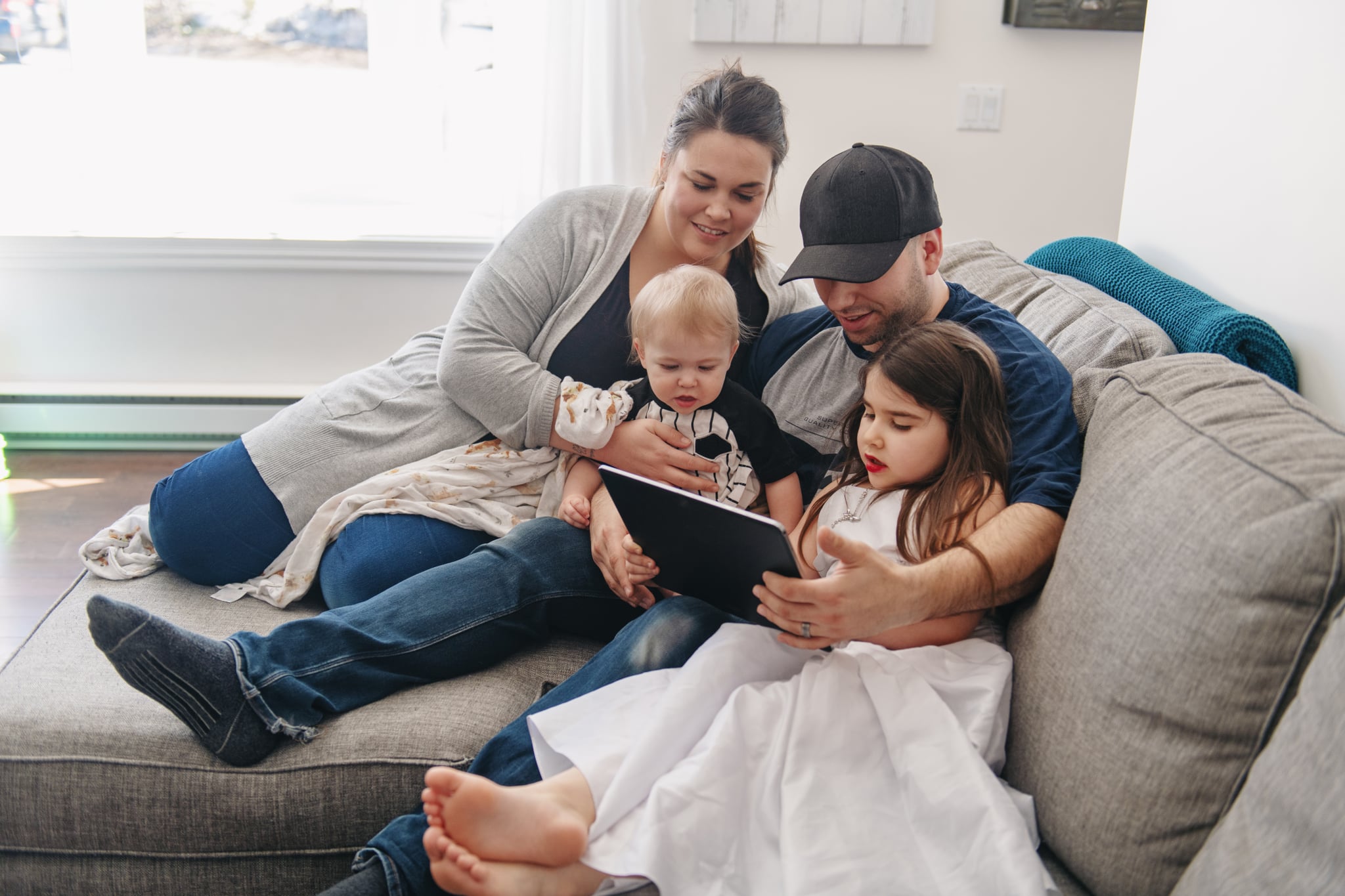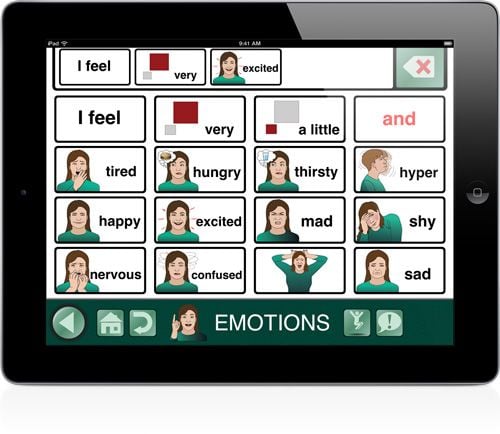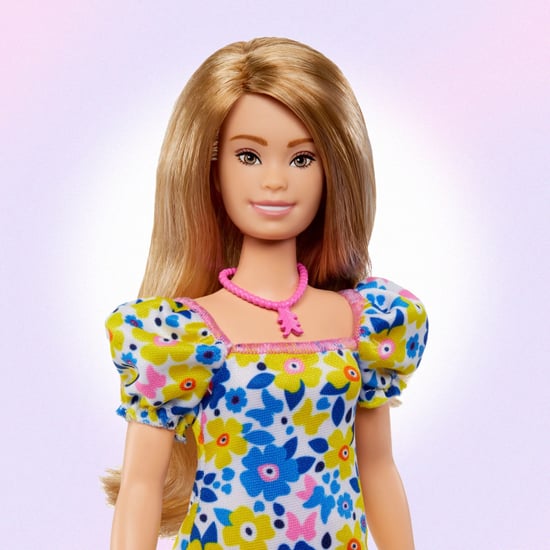As a Speech Pathologist, I Love the GoTalk Now App | Review
The GoTalk Now Lite App Gives a Voice to Children With Autism — and It's Free!

While verbal communication is a common goal for many families of children with autism, it's not always the most functional option. According to the American Speech-Language Hearing Association (ASHA), an estimated two million people use a type of communication known as augmentative or alternative communication (AAC). AAC can incorporate vocalizations, gestures, signs, pictures, or communication devices, depending on a person's strengths and needs. Studies have indicated that AAC can be "effective to highly effective" as an intervention for children with autism.
As a speech/language pathologist, I've used AAC with my clients as a way to maximise self-expression by building on existing abilities. Communication devices are one aspect of AAC that has become increasingly accessible to families. These devices can provide an audible voice for children with a range of special needs, like autism, cerebral palsy, and Down syndrome, who might otherwise struggle to produce intelligible speech on their own. While communication devices are not the best type of AAC for everyone, one of the best options I've discovered is GoTalk Now.
I first came across GoTalk Now in a continuing education course on effective communication apps to use with pediatric clients. I was researching options for a family who was interested in exploring communication devices for their son, who is currently nonverbal. They had already embraced lower-tech versions of AAC, such as sign language and picture exchange, but wanted to find the best fit for the needs of their child. Basic sign language is cheap and portable, but can be difficult for children with motor impairments. Picture communication is often effective, but requires sturdy printers, reliable laminators, an endless ink supply, miles of Velcro, and plenty of time to create new communication boards and picture cards. GoTalk Now was touted as low-cost, customizable, easy-to-use, and accessible for nonreaders, so I downloaded the free version (what they call GoTalk Now Lite) directly from the app store.
 Image Source: Attainment Company
Image Source: Attainment Company
The purpose of a communication device is to generate speech for someone who has difficulty speaking. The most well-known example of computer-generated speech is probably the robotic voice of physicist Stephen Hawking, who used his communication device to share thoughts and knowledge after complications from ALS made verbal speech impossible. For a child with developmental delays like autism, coordinating the cognitive and motor aspects of speech can be especially difficult. In some cases, a communication device can assist them in expressing basic wants and needs more clearly. Simple requests for objects (ex: car, blanket) or actions (ex: eat, play, go outside) can be conveyed with the press of a button.
For children who can isolate their pointer finger, buttons on a touchscreen can be activated by hand. For kids with more significant physical impairments, buttons might be activated by clicking a switch attached to the larger device. Some devices consist of a single switch or button, preprogrammed with a recorded message (ex: "Hello!" or "More, please!"). Other devices can hold one or more communication boards with prerecorded messages assigned to multiple buttons. GoTalk Now, a product of Attainment Company, was designed to function like one of the more complex devices, but can be downloaded onto an iPad like any other app.
Using GoTalk Now Lite, I was able to customise up to five communication pages that my client could use during daily routines and activities. Within these pages, I could upload my own photos, enter my own voice, add audio clips, import internet images, or choose from a bank of GoTalk Now images organised by category. I could create my own templates for each page, incorporating anywhere from 1 to 36 buttons per screen. Pages were easy to edit, with options to copy, paste, and delete buttons as needed. Any text added to a button would be read aloud by the device upon clicking. For instance, if the child pressed the button with a picture of his toy car on it, the device would say "car." Or I could add my own voice as the label for each button, in order to provide a more familiar, less robotic feel.
To introduce the device, I kept the pages basic, focusing on preliteracy, choice-making, yes/no questions, and simple social interactions. For literacy activities, I chose simple books with repetitive phrases, like The Very Hungry Caterpillar by Eric Carle. I added buttons with pictures for each fruit the caterpillar ate, so my client could label pictures from the book as I read it aloud. I also added a button with the line "but he was STILL hungry," so that my client could chime in with that phrase by pressing it.
During choice-making activities, I programmed three to five buttons with toys or activities he liked, so that he could tell me what he wanted to do. Buttons for "all done" and "more" were also helpful during play. I included a page with nothing but "yes" and "no," colour-coded in green and red, so that he could answer basic questions about wants and needs (For example: "Do you want a sip of water?"). To address greeting and closing routines, I had buttons for saying "hi" and "bye" and a button that sang the "Clean Up" song. Because pages were so easy to edit, I never needed more than five pages. I simply updated the existing pages for each session according to the activities I had planned.
The child's response to GoTalk Now Lite was overwhelmingly positive, so much so that the family downloaded the app onto their personal device as well. Over time, they upgraded from the Lite version to one of several pay options that offers even more features, such as unlimited pages. Their child's success with GoTalk Now encouraged the family to pursue a formal augmentative communication evaluation. Based on the results, he was recommended to receive a dedicated speech-generating device called Accent 1000 that could be covered by insurance. GoTalk Now was their sneak peek into what's possible and remains their default for ease-of-use during daily routines.
For families considering the use of communication devices, GoTalk Now Lite is a free, parent-friendly option with tons of features. That being said, consultation with a speech/language pathologist is always recommended when making decisions about the best fit for your child's communication needs. I know that it won't be the best answer for every child. It will, however, give families the opportunity to thoroughly sample a speech-generating platform from the convenience of their iPad. It can also build a family's confidence in understanding the right choice for their child, whatever that looks like today, tomorrow, and beyond.







